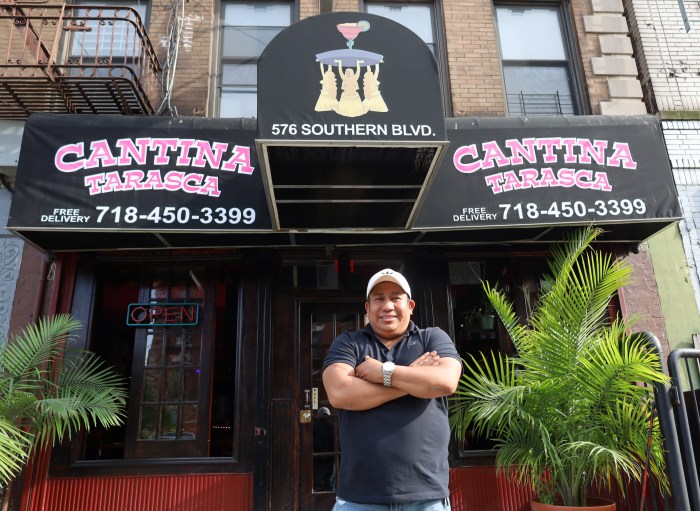Last Friday’s educational panel on how to get back a hospital for the Lower West Side community was very informative about the current state of healthcare in Manhattan. Unfortunately, many of the answers provided by the experts weren’t what the 200-strong audience of local residents — many of them seniors — wanted to hear. But it was important for people to absorb this information — because the effort to fight for a new hospital to replace St. Vincent’s must be grounded in the realities of today’s healthcare environment and the financial bottom line.
That’s what state Senator Tom Duane, the event’s lead sponsor, meant when he prefaced things by stressing that it wasn’t the place for angry venting, but for learning how a new hospital might be created.
St. Vincent’s is gone, Duane said. It’s been gone since it closed its doors on April 30. Yet, it’s been hard for many people to accept that fact — that a vitally important, 161-year-old institution of such size could suddenly, overnight, just cease to be. But that is — again — the reality.
The question now is whether a new, full-service hospital with an all-important emergency room can be achieved, or if the Lower West Side must settle for the state’s plan for a lower-level, urgent-care center, along with four beefed-up F.Q.H.C.’s (federally qualified health centers), including Callen-Lorde in Chelsea, Ryan-Nena in the East Village and Charles B. Wang in Chinatown.
Most people want a hospital — a replacement for St. Vincent’s. Yet, many of the 10 health experts on the panel explained that the trend, in fact, is away from hospitals and toward providing health services. Plus, one of them noted, policymakers have long felt Manhattan has too many hospital beds.
Since there’s no such thing as a free-standing E.R. — no urban “M.A.S.H.” unit as it were — an E.R. would have to be attached to a hospital. And if a hospital, with 200 or 300 beds isn’t happening, then neither will an E.R.
In short, right now, the city administration is strapped for cash and not building new hospitals; instead the city is using its funds to renovate its existing old hospitals, which serve a largely needy, low-income population. The state has a huge debt, and isn’t looking to build a new Village hospital, either. That leaves private healthcare. But no one wanted St. Vincent’s with its gaping $700 million debt, which turned out actually to be $1 billion. First, Continuum Health Partners backed out of a possible acquisition, followed by Mt. Sinai Medical Center — after which St. Vincent’s closed its doors for good.
Despite the discouraging facts voiced at Friday’s panel, there are those still holding out fervent hope that a new Village hospital can be achieved. Eileen Dunn, a former St. Vincent’s nurse on the board of the New York State Nurses Association, is among them. She feels all that’s needed for a new hospital is St. Vincent’s Coleman building, at 11th St. and Seventh Ave. Yet, all of St. Vincent’s property is tied up in bankruptcy court — and it’s the main asset to be used to pay off the huge debt. Similarly, Yetta Kurland, a former City Council candidate, is leading a grassroots effort to keep the pressure on for a new hospital — and will be heading a “Hands Around St. Vincent’s” rally this Saturday afternoon from 2 p.m. to 4 p.m. More power to her and Dunn, and we hope a way can be found to get a new hospital — somewhere in the intersection between hopes and wishes and realities.
As a Catholic hospital, St. Vincent’s was, to a certain extent, built on faith. Maybe “keeping the faith” is what can help bring us a new hospital. But, again, the realities on the ground are concrete and unyielding and, ultimately, we may all have to accept them.

















